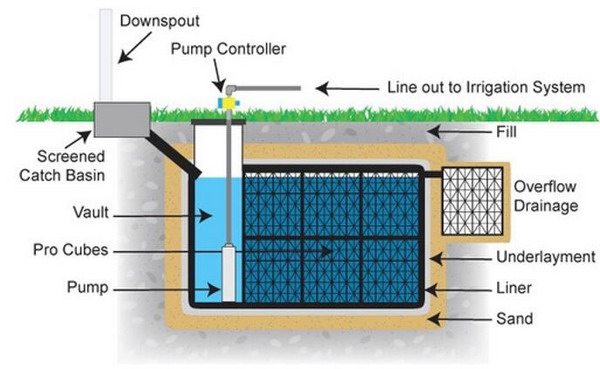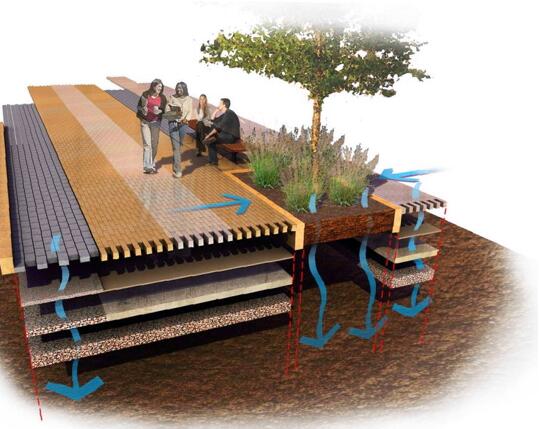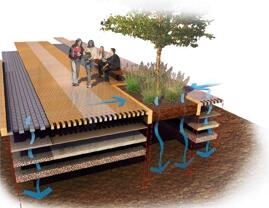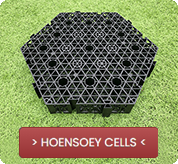Three Ways for Utilizing Rainwater
1. Direct rainwater use
RAINWATER HARVESTING is the collection, filtering and storage of rainwater from roofs, roadways, and landscape surface runoff. Roof gutters and piping direct rainwater to a storage cistern, while surface-level drains and piping collect from hard surfaces and landscapes. Large debris is removed with coarse filtration, and additional treatment such as sedimentation, fine filtration and coagulation can be added. Harvested rainwater is generally used for flushing, landscape irrigation and related non-potable uses such as road washing, among many others. Using rainwater can help alleviate increased demand on treated water supplies, and also help to reduce the peak flows and flooding of storm systems.

2. Indirect rainwater use
RAINWATER INFILTRATION allows captured rainwater to soak into the soil, replenishing ground water sources. Infiltration acts to reduce runoff and peak flow during storms, and keeps rainwater on the site rather than having it flow someplace else. Collection for infiltration is normally from hard surfaces such as roads, driveways and patios, with sediment and debris often removed before storage. Subsurface storage vaults can be created, or temporary surface storage using rain-gardens or bios-wales can be created. The idea is that the storage fills up quickly during storm events, and drains away into the soil slowly, which means direct use of the rainwater is not possible.

3. Comprehensive rainwater use
Combining Direct and Indirect uses of rainwater can be beneficial in providing an alternate water source while replenishing ground water reserves. When used in conjunction with green roofs and conservation measures, a comprehensive water use program can be developed to help reduce demands and to protect this valuable resource. Previously thought of as waste, rainwater is quickly becoming recognized for its value and importance in our ecosystems and environment.
Thanks to Ken Nentwig for correcting and modifying this article.





